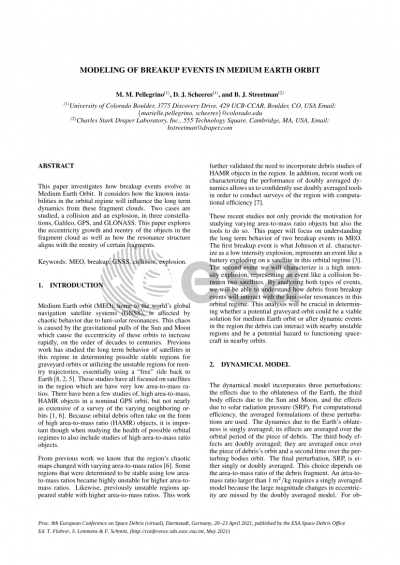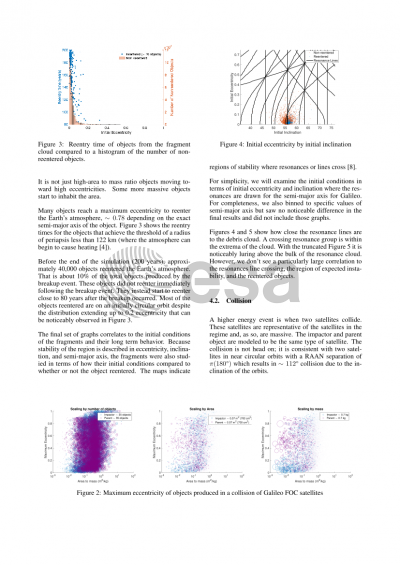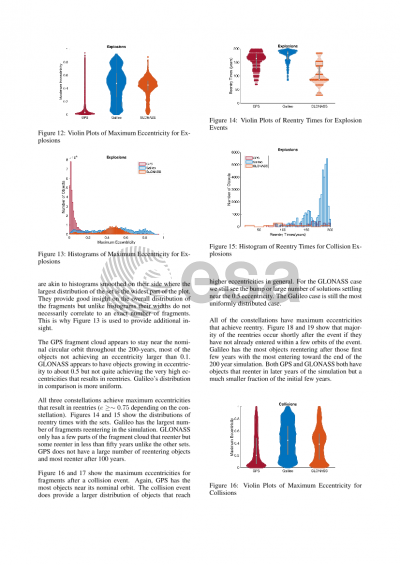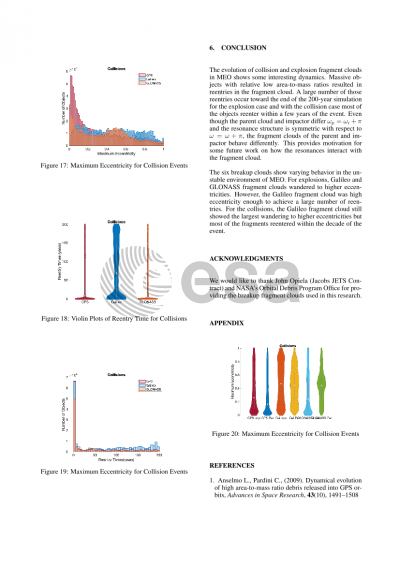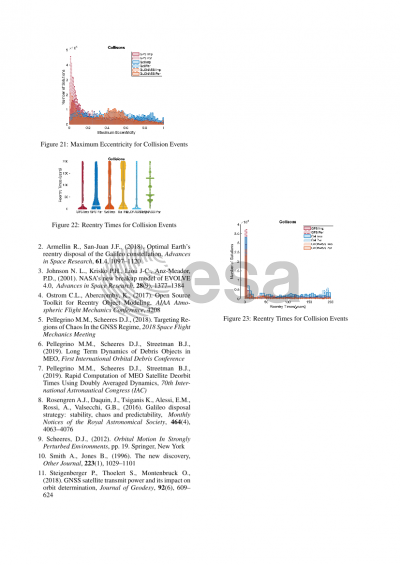Document details

Abstract
Medium Earth orbit (MEO), home to the world’s global navigation satellite systems (GNSS), is affected by chaotic behavior due to luni-solar resonances. This chaos is caused by the pulls of the Sun and Moon which cause the eccentricity of these orbits to increase rapidly, on the order of decades to centuries. Previous work has studied the long term behavior of satellites in this regime in determining possible stable regions for graveyard orbits or utilizing the unstable regions for reentry trajectories, essentially using a “free” ride back to Earth. These studies have all focused on satellites in the region which are have very low area-to-mass ratios due to being incredibly massive. There have been a few studies of HAMR objects in a nominal GPS orbits, but not nearly as extensive of a survey of the varying neighboring orbits. Because orbital debris often take on the form of high area-to-mass ratio (HAMR) objects, it is important though when studying the health of possible orbital regimes to also include studies of high area-to-mass ratio objects.
Recently, we have written two papers studying high area-to-mass ratio objects in the medium Earth orbit regime. These papers answered questions on whether the area-to-mass ratio changes where chaotic activity occurs in MEO and what techniques can be used to best study these regions. The conclusion from the former was that the region’s chaotic maps changed with varying area-to-mass ratios. Some regions that were determined to be stable using low area-to-mass ratios became highly unstable for higher area-to-mass ratios. Likewise, previously unstable regions appeared stable with higher area-to-mass ratios. This work further validated the need to incorporate debris studies of HAMR objects in the region. The latter study provided us with tools to survey the region with computational efficiency without losing the fidelity of the solution.
These recent studies not only provide the motivation for studying varying area-to-mass ratio objects but also the tools to do so. This paper will focus on understanding the long term behavior of two breakup events in MEO. The first breakup event is what Johnson et al. characterizes as a low intensity explosion, represents an event like a battery exploding on a satellite in this orbital regime [1]. The second event we will characterize is a high intensity explosion, representing an event like a collision between two satellite. By analyzing both types of events, we will be able to understand how debris from breakup events will interact with the luni-solar resonances in this orbital regime. This analysis will be crucial in determining whether a potential graveyard orbit could be a viable solution for medium Earth orbit or after dynamic events in the region the debris can interact with nearby unstable regions and be a potential hazard to functioning spacecraft in nearby orbits.
[1] Johnson, Nicholas L., et al. "NASA's new breakup model of EVOLVE 4.0." Advances in Space Research 28.9 (2001): 1377-1384.
Preview
